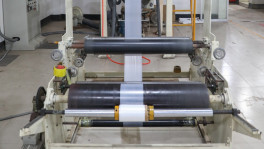Microcredit: A bliss for Bangladesh economy and sustainable development
The idea of ‘modern microcredit’ was introduced by the Grameen Bank in 1983. It acted as a popular tool for economic development not only in Bangladesh but also throughout the third world

With a population of about 164 million, Bangladesh has made remarkable progress in maintaining its socio-economic status by reducing its international poverty line to 14.8 percent by 2016 (UN, 2020). It is on track for graduating from the LDC category in 2024. Also, it is one of the world's fastest-growing economies with 7.3 percent real GDP annual growth as of 2019 and with US$5,139 (PPP) and US$2,064 (nominal) GDP per capita income (IMF, 2020).
Nevertheless, one of the biggest contributions behind this is the notion of "microcredit" that greatly helped the rural population, especially after the post-liberation war period. The idea of microcredit can be traced from the "Comilla BARD Model" of 1971, originally founded by the cooperative pioneer Akhter Hameed Khan in 1950s.
The NGOs emerged mainly after liberation when foreign aids were being provided in terms of foods and clothing to recover from famine and war calamities. But this did not provide any durable solution to the problem of poverty that Bangladesh was facing. Hence, co-operative societies and NGOs started to provide small credit facilities to the people with high-interest rates that failed for low reimbursement of monies.
The idea of "modern microcredit" was introduced by the Grameen Bank in 1983. It acted as a popular tool for economic development not only in Bangladesh but also throughout the third world. Through this model, the NGOs played an important role in sustainable development. It also promoted positive microeconomics, especially through female work-force endowment – which resulted in increased decision-making and participation within the family and society.
However, controversy arose due to the lack of 'regulation' and 'stratagem'. Again, there was the absence of an independent regulatory authority to control and supervise microfinance in Bangladesh. Also, the commercialisation of microcredit by establishing "profit-motivated microfinance institutions" (MFIs) led to a negative impact on poverty since rural people become incapable of paying off the debt. Even many MFIs became bankrupt, while some eloped with people's money. Study shows that NGO-MFIs tended to locate their regional offices in developed areas that definitely hindered its original purpose, which is to support the vulnerable.
This was all before 2006, almost three decades after the initiation of microfinance in Bangladesh. Due to the existence of thousands of established and uprising NGOs operating across the country, an independent regulatory authority was established. It is known as the 'Microcredit Regulatory Authority (MRA)' as per the Microcredit Regulatory Authority Act of 2006 (Act no-32 of the year 2006)
Being the sole regulatory body, MRA commits to creating a conducive and healthy environment in the microfinance sector. Its motive is to help NGOs in conducting microfinance activities to contribute to eradicating poverty as well as fostering sustainable development. A detailed guideline has been provided in this regard for NGO-MFIs to enhance their governance practices. For example, NGOs must require licenses from MRA to operate microfinance activities in Bangladesh. They have to fulfil the eligibility criteria within the given provision time, the process of which is provided in the Act of 2006 and Rules of 2010.
To uphold this vision, MRA's mission is to ensure transparency and accountability of microfinance operations of NGO-MFIs so that the interests of the clients are secured. To achieve so, the authority may withdraw license and even impose sanctions in case of failure to comply with the requirements set by the MRA.
Moreover, individual MFIs are also obliged to report prescribed data twice a year and financial data once a year to the MRA. This is to ensure that proper auditing can be reached by averting any corruption. In one word, MRA advocates for prudential policy design, greater competition, productivity, efficiency and long-term sustainability of the microfinance sector.
The success of the MRA could be discerned from the fact that currently 756 licensed NGO-MFIs with 3.2 crore clients are in operation in Bangladesh. 1.5 lac employees are working in about 18,196 branches established all over the country. The percentage of debt collection (92 percent to 95 percent) compared to banking or other financial institutions (below 50 percent) is huge. The savings status of the members is 54 percent higher than in other sectors. Not only that, the MFIs are also paying 0.15 percent of service charge to the authority at ease. There is almost zero percentage of the defaulter in this microfinance scheme and the credit goes to the mesmerizing regulatory prospect of this authority.
Nonetheless, the MRA should expand its institutional and operational capacity by establishing regional offices commensurate with the largely scattered microfinance sector operating across the country. This way, not only effective monitoring of NGO-MFIs will be ensured but also more workforce in different regional offices will expedite the overall governance process of the MRA.
The writer is an apprentice lawyer and a former internee at the Microcredit Regulatory Authority.
Disclaimer: The views and opinions expressed in this article are those of the author and do not necessarily reflect the opinions and views of The Business Standard.


 Keep updated, follow The Business Standard's Google news channel
Keep updated, follow The Business Standard's Google news channel
















